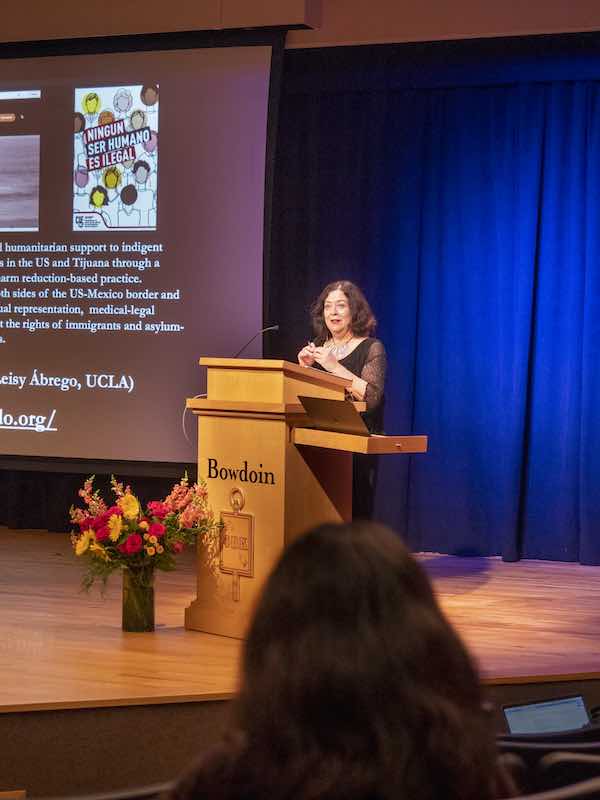Charlene Villaseñor Black lectures on Latinx art
September 23, 2022
 Alex Spear
Alex SpearOn Thursday afternoon, the Bowdoin College Museum of Art hosted the lecture “Thinking about migration through Latinx art” given by Professor of Art History and Chicana/o Studies at the University of California, Los Angeles and Phi Beta Kappa Visiting Scholar Charlene Villaseñor Black. Black focused the talk on answering questions of migration and radical hospitality through Latinx and Chicanx artwork.
Co-Director of the Bowdoin College Museum of Art Anne Goodyear opened the talk by introducing Black and detailing her impressive career as a scholar. Black was invited to speak at Bowdoin through the Phi Beta Kappa program, and in addition to her lecture had the opportunity to share her work with the broader Bowdoin community.
“One of the things that’s been so exciting about [Black’s] visit is that she’s had the opportunity to meet with language classes, literature classes, government classes and art history classes. It really was exciting how many professors responded to this opportunity … engaging a number of different topics, but especially this one connecting to decolonizing,” Goodyear said.
In her talk, Black focused on Sandy Rodriguez’s artwork, speaking on Rodgriguez’s installation “You Will Not be Forgotten.” She highlighted a piece from the installation created in commemoration of seven Latinx migrant children who died at the border and spoke on how the art can be used to answer broader questions of Latinx history and migration.
“I place them in the context of practices of memorialization, both contemporary and historical, secular and sacred,” Black said. “Then I consider the particular status of portraiture in Chicanx and Latinx art. To conclude, I turn to theoretical considerations of memory, hospitality, trauma and hope.”
Black ended the talk by explaining the significance of art in the issue of migration.
“We’ve seen today in the works of Rodriguez and others that artists can humanize this process of knowing by making the immigrant refugee a perceived foreigner known at the unstable site of strategy and decision,” Black said. “Her references to the past in her materials, her technique, the inclusion of ancient Mesoamerican indigenous imagery reveal the particular power of art to bring past and present together, to illuminate how the past conditions are present, how the history of invasion, conquest and colonization dating back to 1492 haunts us today.”

Comments
Before submitting a comment, please review our comment policy. Some key points from the policy: